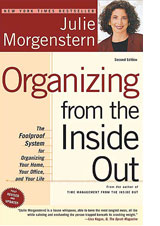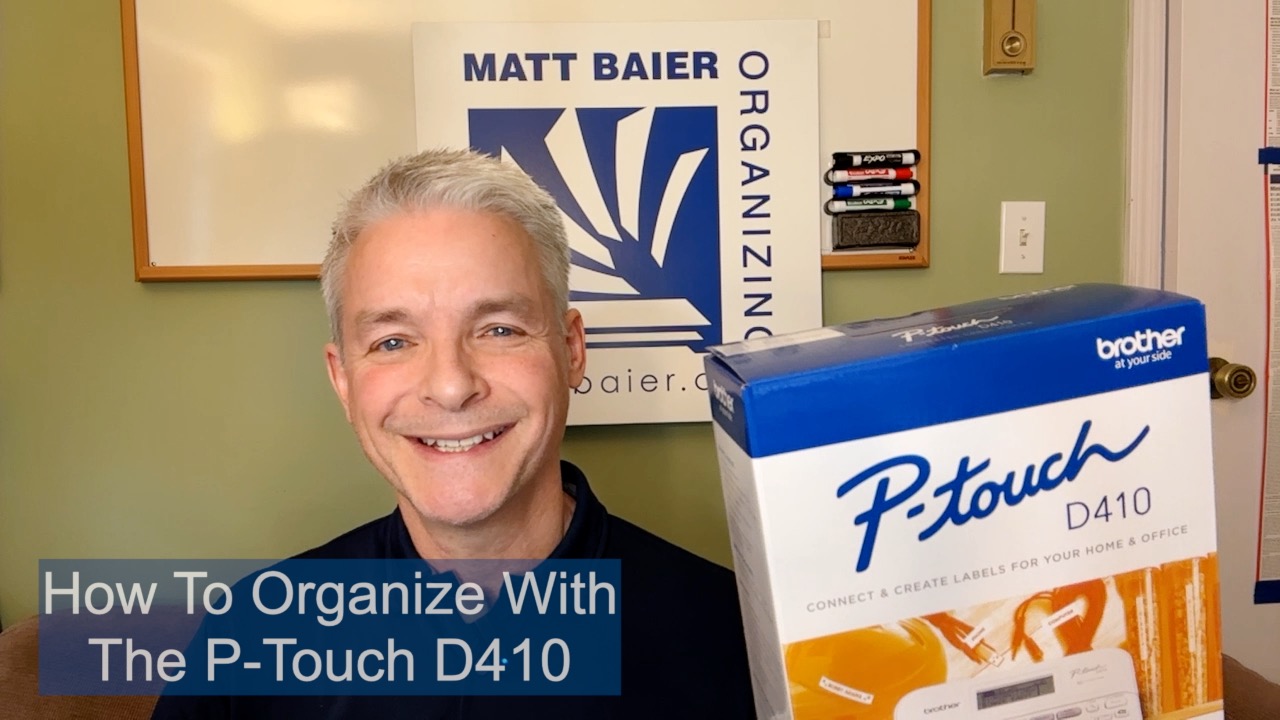Book Review: Organizing From The Inside Out

OFTIO, as I call it (no, I just made that up, as far as I know), is still the BEST book I have ever read on the subject of organizing. So ten years later, I think it is high time I reviewed it.
Morgenstern begins with a story about her “day of reckoning” when she and her baby daughter missed out on a beautiful day because she was (then) so disorganized. Right off the bat, she gets to the whole point of getting organized. It’s not about how to get your stuff into pretty little baskets. It’s about getting to the important things in life by taking the less important obstacles out of the way. It’s important to acknowledge that much of life is NOT controllable, but she explains exactly how to control the parts that are.
Morgenstern breaks the getting organized process into three stages: Analyze, Strategize, Attack. The Attack stage is subdivided into five steps, which can be remembered by her crowning achievement: The S.P.A.C.E. process. S.P.A.C.E. stands for Sort, Purge, Assign, Containerize, Equalize. I applied this process when I first started my organizing business and my organizing company still uses it today. Why? Because it works, every time. It’s more than a cute acronym. It’s scientific. There is simply no organizing process that is more effective.
To best understand how the S.P.A.C.E. process works, it makes sense to review it backwards. Equaliize means maintenance. (but maintenance doesn’t start with an “e”). The Equalize stage is all about exercising new organizing habits, which include updating them as new events happen in our lives. Good organizing habits go hand in hand with the appropriate containers, which we arrive at in the Containerize stage. Appropriate containers are determined when we know exactly where we are Assigning the items we are keeping, based on the quantities we are keeping from each category. We determine these quanities based one what’s leftover after the purge, which not only means toss, but donate, sell, and reassign. The purge stage needs to happen after items have been sorted into general categories. When you see items in categories of like with like, it is much easier to purge items than if they are all thrown together. You may be in a rush to start purging, but don’t do it without the SORT stage first.
The biggest portion of the book is devoted to applying these principles to various rooms. At the end of the book, Morgenstern covers “Tackling Time and Technology.” She elaborates on the subject of time management in her follow up books Time Management From the Inside Out and Never Check Email In the Morning. I highly recommend those too.
Please Share With Your Community
Testimonials
What some of our clients are saying
Imagine An Organized Home















